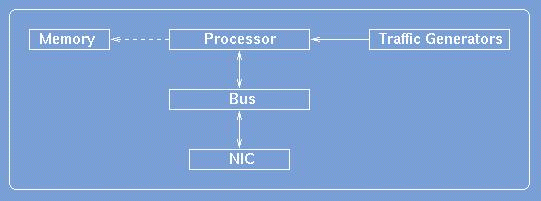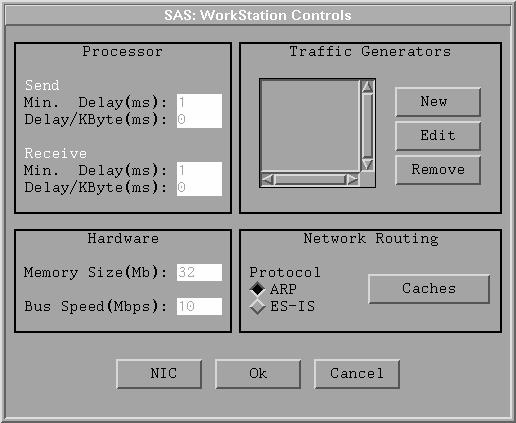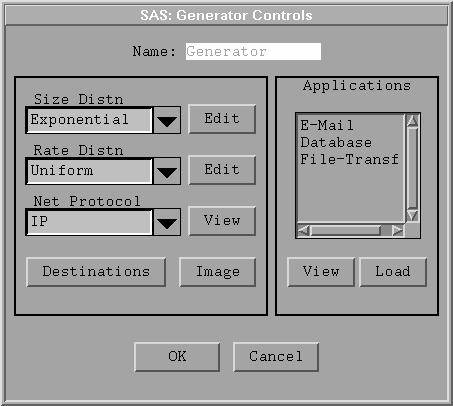Chapter Contents
Previous
Next
|
Chapter Contents |
Previous |
Next |
| LAN Environment |
In addition to the common Computing Device properties, the Workstation model features network routing protocols and the capability to generate data packet traffic destined for other Computing Device models throughout your model LAN network. The Workstation equipment model is the primary traffic generator in the LAN environment. The logical architecture of a Workstation model is depicted in Figure 4.7.

A sample Workstation model control panel is displayed in Figure 4.8.

The list box in the Traffic Generators section of the control panel
contains the names of all the traffic generators attached to this model.
The ![]() and
and ![]() buttons operate on the item selected
in the list box, and clicking the
buttons operate on the item selected
in the list box, and clicking the ![]() button creates a new traffic
generator.
button creates a new traffic
generator.
The control panel for a LAN traffic generator (Figure 4.9) is displayed
when you click either the ![]() or
or ![]() button.
button.

These controls are very similar to a telecom call generator. The Size Distn determines the number of bytes of data to send as traffic to another Computing Device model, and the Rate Distn controls the time between traffic generation. The Net Protocol controls are not used by netWorks at this time, and the Destinations controls are completely analogous to the Destinations controls in the telecom environment. The intent of the Applications section is to provide predefined traffic generators modeling common network applications. The default Application values are for demonstration purposes only.
|
Chapter Contents |
Previous |
Next |
Top |
Copyright © 1999 by SAS Institute Inc., Cary, NC, USA. All rights reserved.